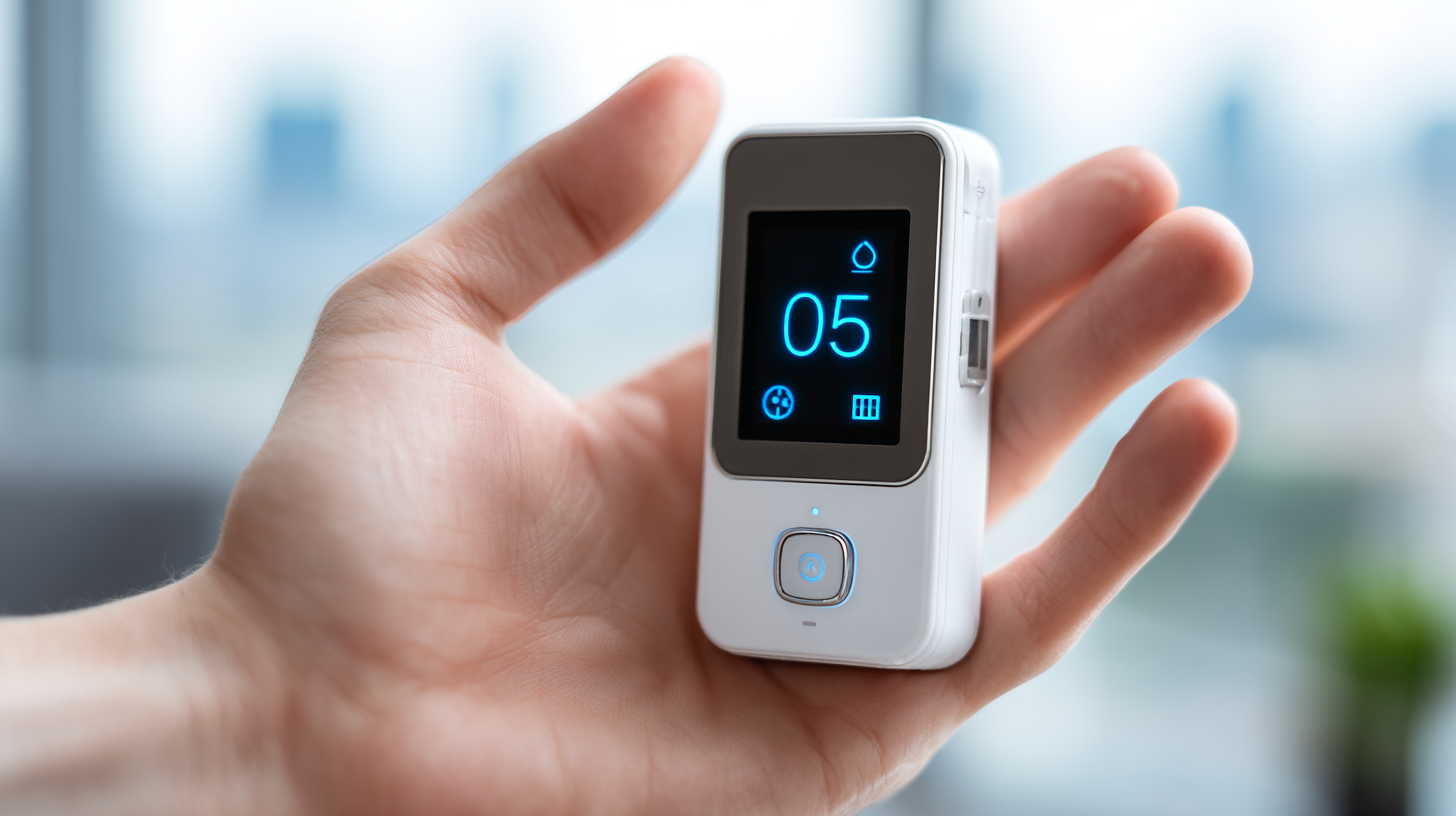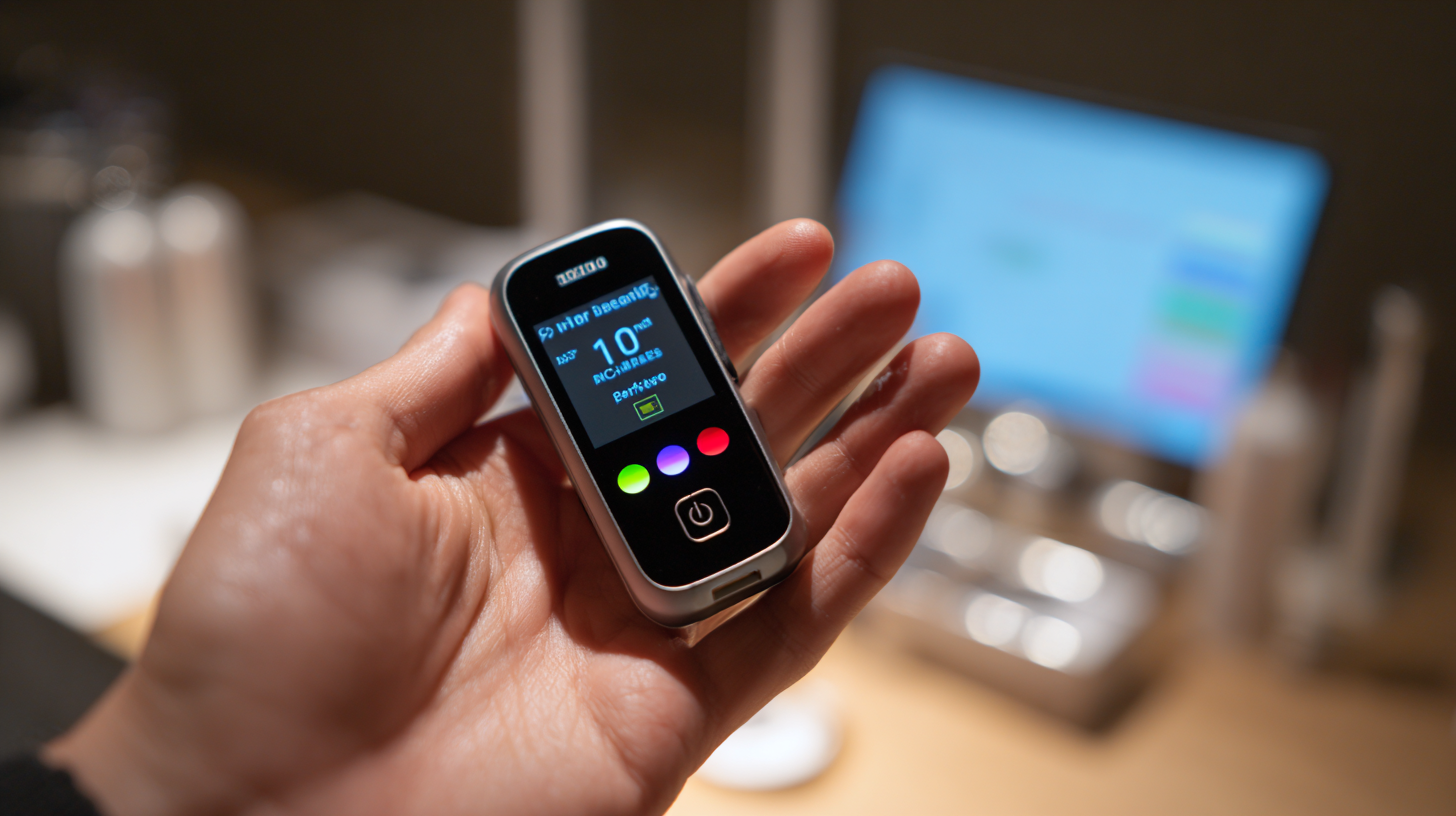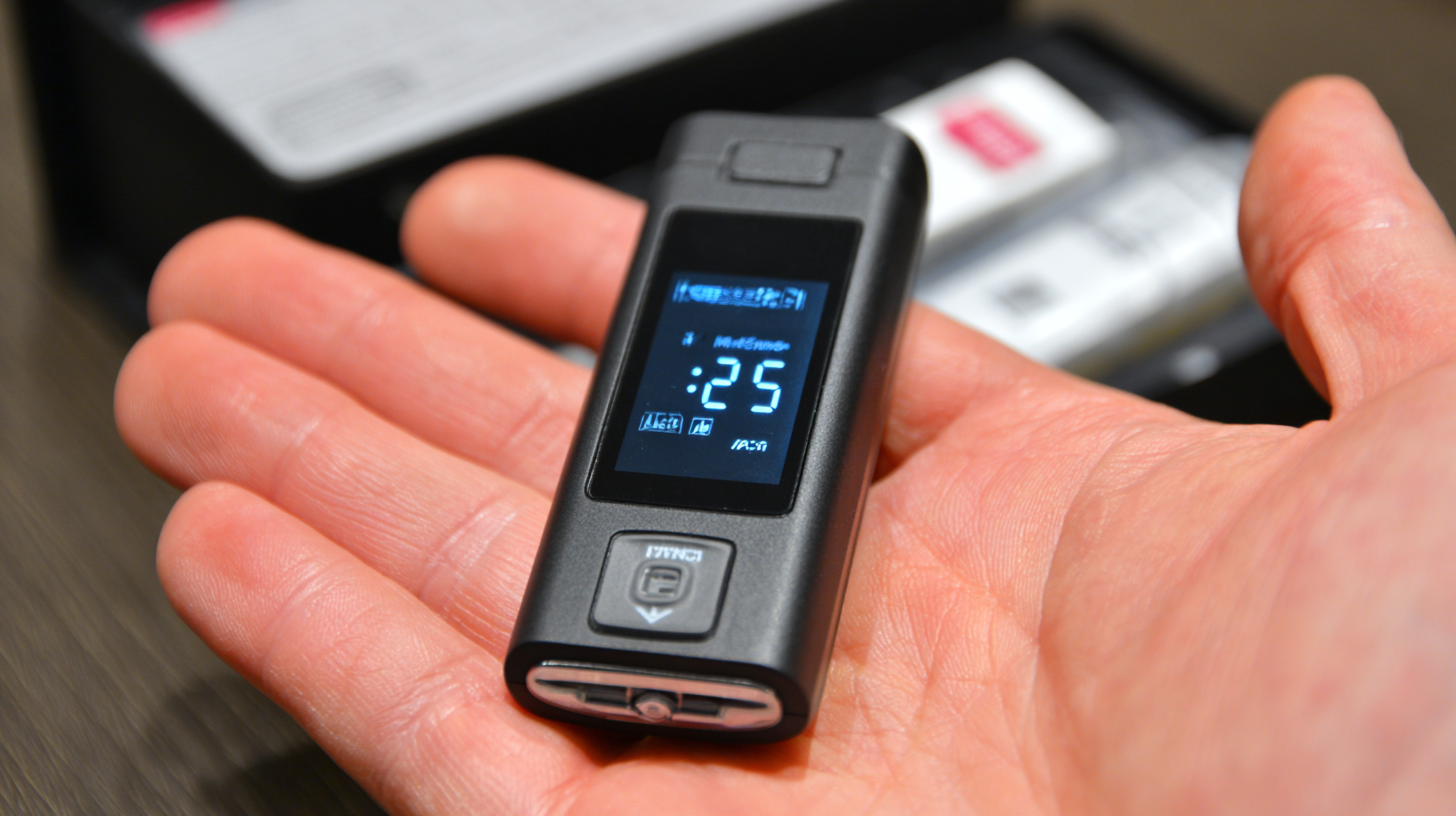The Ultimate Guide to Choosing the Best Fingertip Oximeter: Features, Accuracy, and Market Trends
In recent years, the demand for fingertip oximeters has skyrocketed, driven by the increasing emphasis on health monitoring and the rise of home healthcare solutions. According to a recent market report by Grand View Research, the global pulse oximeter market is expected to reach USD 3.1 billion by 2027, growing at a CAGR of 10.2% from 2020 to 2027. This surge is largely attributed to the increased prevalence of respiratory diseases and the aging population, which are raising the need for efficient and accessible medical devices.
 In this context, the fingertip oximeter stands out due to its portability, ease of use, and essential role in monitoring blood oxygen levels. As manufacturers, particularly those from China, focus on enhancing quality, these devices are earning global respect for their reliability and precision. This guide aims to delve into the critical aspects of choosing the best fingertip oximeter, exploring features, accuracy, and prevailing market trends to assist consumers in making informed decisions.
In this context, the fingertip oximeter stands out due to its portability, ease of use, and essential role in monitoring blood oxygen levels. As manufacturers, particularly those from China, focus on enhancing quality, these devices are earning global respect for their reliability and precision. This guide aims to delve into the critical aspects of choosing the best fingertip oximeter, exploring features, accuracy, and prevailing market trends to assist consumers in making informed decisions.
Key Features to Look for in a Fingertip Oximeter
When choosing a fingertip oximeter, several key features are essential to consider to ensure accuracy and reliability. First and foremost, look for devices that provide quick and precise readings, as every second counts in monitoring oxygen saturation levels. A clear digital display is also crucial, allowing easy readability of results in various lighting conditions. Additionally, ensure the oximeter has a high measurement range, as this can accommodate different health conditions and activities.
Another important factor to evaluate is the device's battery life. A reliable oximeter should have a long-lasting battery or options for easily replaceable ones. This is particularly important for those who need to monitor their oxygen levels regularly or on-the-go. Lastly, consider the size and design of the oximeter. A portable and ergonomically designed device makes it easier to use and more comfortable for extended periods, especially for pilots and athletes who may need to check their readings frequently at high altitudes.
Understanding Accuracy: How to Evaluate Oximeter Readings
When choosing a fingertip oximeter, understanding accuracy is paramount. Oximeters provide critical information about a patient's blood oxygen saturation levels and pulse rates, which can be vital for those with respiratory conditions. According to a review published in the Journal of Clinical Monitoring and Computing, many consumer-grade oximeters tend to have an accuracy level of about ±2% for SpO2 levels within the range of 70% to 100%. It’s essential to note that devices can perform differently depending on factors like skin pigmentation, temperature, and motion.
To evaluate oximeter readings effectively, consider devices that come with FDA clearance, as these typically undergo rigorous testing for accuracy. A 2021 report from the American Journal of Respiratory and Critical Care Medicine emphasized that oximeters achieving an accuracy rate of ±2% are suitable for clinical use, especially for patients with chronic obstructive pulmonary disease (COPD). Additionally, newer models on the market now incorporate advanced sensor technology that can provide more reliable readings, even in less-than-ideal conditions. As market trends shift, focusing on accuracy will ensure users select a device that is not only efficient but also trustworthy in real-time health monitoring.
The Ultimate Guide to Choosing the Best Fingertip Oximeter: Features, Accuracy, and Market Trends - Understanding Accuracy
| Feature | Importance | Typical Accuracy (%) | Market Trend (2023) |
|---|---|---|---|
| Pulse Rate Measurement | High | ±2 BPM | Increasing Demand |
| SpO2 Monitoring | Critical | ±2 % | Stable Growth |
| Battery Life | Medium | 200+ hours | Improving Technology |
| Display Type | High | LED vs. OLED | Preference for OLED |
| Price Range | Varies | $15 - $100 | Competitive Pricing |
The Importance of CE and FDA Approvals in Oximeter Selection
When selecting a fingertip oximeter, understanding the significance of CE and FDA approvals is crucial. These certifications ensure that the device adheres to safety and efficacy standards, providing reliable readings for heart rate and oxygen saturation levels. Research indicates that accurate oximeters can make a substantial difference in patient outcomes, especially for those managing chronic lung and heart conditions. In fact, data shows that using a reliable pulse oximeter can reduce hospital visits by up to 30% for patients with respiratory issues, underscoring the device's importance in home health management.
When choosing the best fingertip oximeter, consider the following tips: First, look for models that boast both CE and FDA approvals, which reflect rigorous testing. Second, opt for oximeters with high accuracy ratings, ideally above 95%, as noted in recent industry reports. Lastly, assess the user interface; a device that is easy to read and operate can significantly enhance usability for the elderly or individuals with limited tech experience. By focusing on these factors, users can ensure that they select a quality device that meets their health monitoring needs effectively.

Current Market Trends: What’s Driving the Fingertip Oximeter Industry?
The fingertip oximeter industry has experienced a significant surge in demand, driven by several key market trends. One of the primary factors is the increasing awareness of health monitoring among consumers. With the rise of preventive healthcare, individuals are seeking ways to track their vital signs at home. As a result, fingertip oximeters have become essential tools for those managing chronic conditions like asthma or heart disease, as well as for fitness enthusiasts aiming to optimize their performance.

Another driving force behind the growth of this market is the technological advancements in oximeter design and functionality. Modern fingertip oximeters are not only more accurate but also feature user-friendly interfaces and connectivity options that allow for seamless integration with smartphones and health apps. This capability enables users to monitor their oxygen levels and heart rates in real-time, thus fostering a proactive approach to health. Additionally, with the ongoing impact of global health events, such as the COVID-19 pandemic, there has been an unprecedented focus on respiratory health, further propelling the demand for reliable monitoring devices.
Choosing Quality Manufacturers: What to Consider Before Buying
When selecting a fingertip oximeter, one of the most critical factors to consider is the quality of the manufacturer. As reported in various market insights, the demand for reliable health monitoring devices has surged, driving retailers to seek partnerships with reputable manufacturers who ensure accuracy and durability in their products. According to a recent industry analysis, oximeters with a higher quality standard often exhibit an accuracy rate of over 95%, making it essential for retailers to align with manufacturers that adhere to stringent quality control protocols.
Additionally, the rise of private label products has reshaped the marketplace, enabling retailers to enter the health tech sector without the need to produce their own devices. This model presents a unique opportunity to leverage existing manufacturing expertise while maintaining branding independence. With projections indicating that the private label market will continue to expand, businesses can capitalize on this trend by sourcing oximeters from established manufacturers known for their quality. Engaging with manufacturers who prioritize transparency and provide robust data on product performance can significantly enhance a retailer's positioning in this growing market.

